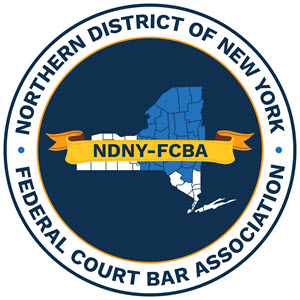By Alex Robinson
J.D., Syracuse University College of Law ‘19
On Wednesday, April 17, 2019, the United States Supreme Court heard argument in a case originating in the NDNY, McDonough v. Smith, 15-CV-1505, 2016 WL 7496128 (N.D.N.Y. Dec. 30, 2016) (D’Agostino, J.), aff’d, McDonough v. Smith, 898 F.3d 259 (2d Cir. 2018), which will resolve a circuit split regarding the statute of limitations governing a Section 1983 claim based on the alleged fabrication of evidence.
The majority of circuits hold that such a claim accrues on the date a defendant’s criminal proceeding is terminated in the defendant’s favor. Floyd v. Attorney General, 722 F. App’x 112, 114 (3d Cir. 2018) (per curiam); Castellano v. Fragozo, 352 F.3d 939, 959-960 (5th Cir. 2003) (en banc); Mills v. Barnard, 869 F.3d 473, 484 (6th Cir. 2017); Bradford v. Scherschligt, 803 F.3d 382, 387-389 (9th Cir. 2015); Mondragón v. Thompson, 519 F.3d 1078, 1083 (10th Cir. 2008). However, the Second Circuit has held that the claim accrues when the wrongful act or omission results in damages and the defendant becomes reasonably aware of the tainted evidence and its improper use. McDonough, 898 F.3d at 265.
The plaintiff, McDonough, was the commissioner of the Rensselaer County Board of Elections. As commissioner, McDonough had the duty to process absentee ballot applications. In 2009, McDonough processed fabricated absentee ballot applications. He claims that he was unaware that the applications were falsified. An investigation found that members of the Working Families and Democratic Parties forged signatures and provided false information on absentee ballot applications to affect the Working Families Party primary election in the City of Troy, New York.
In response to the falsified applications, the state appointed Youel “Trey” Smith, Esq., as Special District Attorney for the County of Rensselaer to lead an investigation and potential prosecution. After the investigation, according to McDonough’s civil complaint, Smith presented a grand jury with allegedly fabricated DNA evidence connecting McDonough to the falsified applications. The grand jury indicted McDonough on charges of forgery and criminal possession of a forged instrument.
Before proceeding to trial, Smith allegedly solicited the cooperation of the application forgers to implicate McDonough. The case resulted in a mistrial. Smith retried the case. On December 21, 2012, the second trial ended in acquittal. McDonough claims that the fabricated evidence was presented at both trials.
On December 18, 2015, McDonough brought this action against Smith and other defendants in the NDNY. In his complaint, McDonough asserted a Section 1983 claim based on the fabrication of evidence as well as a claim of malicious prosecution. In two orders, the district court dismissed McDonough’s Section 1983 claim against all defendants and the malicious prosecution claim against Smith (leaving the malicious prosecution claim against the other defendants still pending). More specifically, the district court held that McDonough’s Section 1983 claim was time-barred because he was harmed and reasonably aware of the improper use of the fabricated evidence against him three-years before bringing the action. It also held that the prosecutor was entitled to absolute immunity.
The Second Circuit reviewed the case de novo and affirmed the district court’s holdings. In doing so, the Second Circuit disagreed with the majority of circuits’ precedent that a Section 1983 claim based on fabricated evidence accrues on the date a defendant’s criminal proceeding is terminated in the defendant’s favor. Instead, the Second Circuit held that, “[b]ecause the injury for this constitutional violation occurs at the time the evidence is used against the defendant to deprive him of his liberty, whether it be at the time he is arrested, faces trial, or is convicted,” the statute of limitations begins to run “when he becomes aware of [the] tainted evidence and its improper use” and “his liberty has been deprived in some way.” McDonough, 898 F.3d at 267. Consequently, the statute of limitations began to run when McDonough learned of the fabricated evidence “at the earliest, when he was indicted and arrested and, at the latest, by the end of his first trial, after all of the prosecution’s evidence had been presented.” Id.
Critics of the Second Circuit’s holding argue, among other things, that (1) it runs afoul of the Supreme Court’s holding in Heck v. Humphrey, (2) it adversely affects the ongoing criminal proceeding, (3) it squanders judicial resources, (4) it creates an unworkable legal standard, and (5) it ignores the practical difficulties of criminal defendants bringing a civil action while defending themselves. Brief for the Cause of Action Institute as Amicus Curiae, pp. 1-2, McDonough v. Smith, __ S.Ct. __ (2019) (No. 18-485); Brief for the Criminal Justice Institute of Harvard Law School as Amicus Curiae, pp. 2, 5-7, 9-10, McDonough v. Smith, __ S.Ct. __ (2019) (No. 18-485).
During oral arguments before the Supreme Court on April 17, the United States joined in support of Petitioner. Justice Samuel Alito told Petitioner that “this case has [his] head spinning” because he was unsure of which part of the Constitution the claim is based and unsure of the claim’s elements. S. Ct. Arg. Tr. 6, Apr. 17, 2019. Justice Neil Gorsuch asked whether favorable termination was part of the elements of a fabrication-of-evidence claim; if is not, he asked whether the Court should take a case to determine the claim’s elements as opposed to creating a “bespoke tort.” S. Ct. Arg. Tr. 14-15. Respondent began his argument by mentioning that his “head has been spinning from this case for a lot longer than yours.” S. Ct. Arg. Tr. 37. Chief Justice John Roberts and Justices Stephen Breyer, Sonia Sotomayor and Brett Kavanaugh questioned Respondent about public policy preferring the “more orderly, practical approach” of a favorable-termination requirement. S. Ct. Arg. Tr. 37-59.
A transcript and audio file of the oral argument is available at the Supreme Court’s website. A decision is expected in June.

